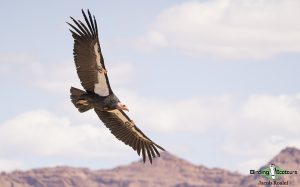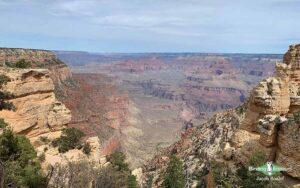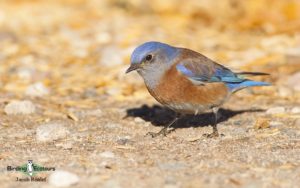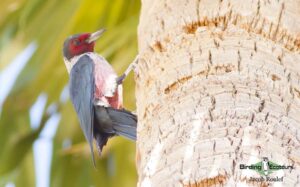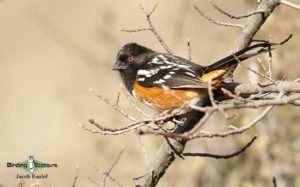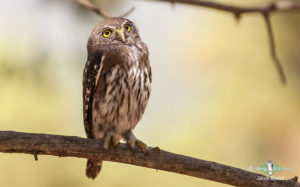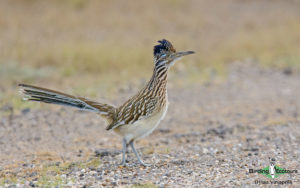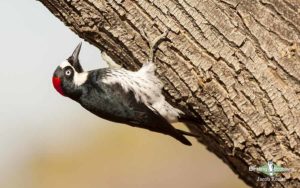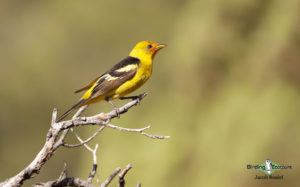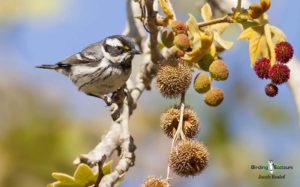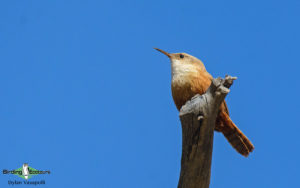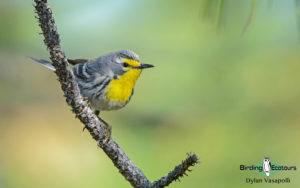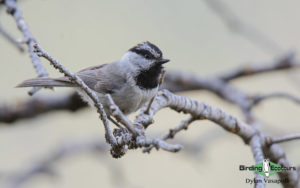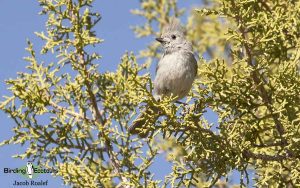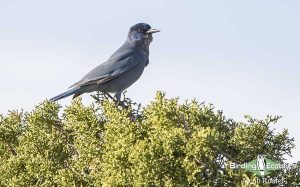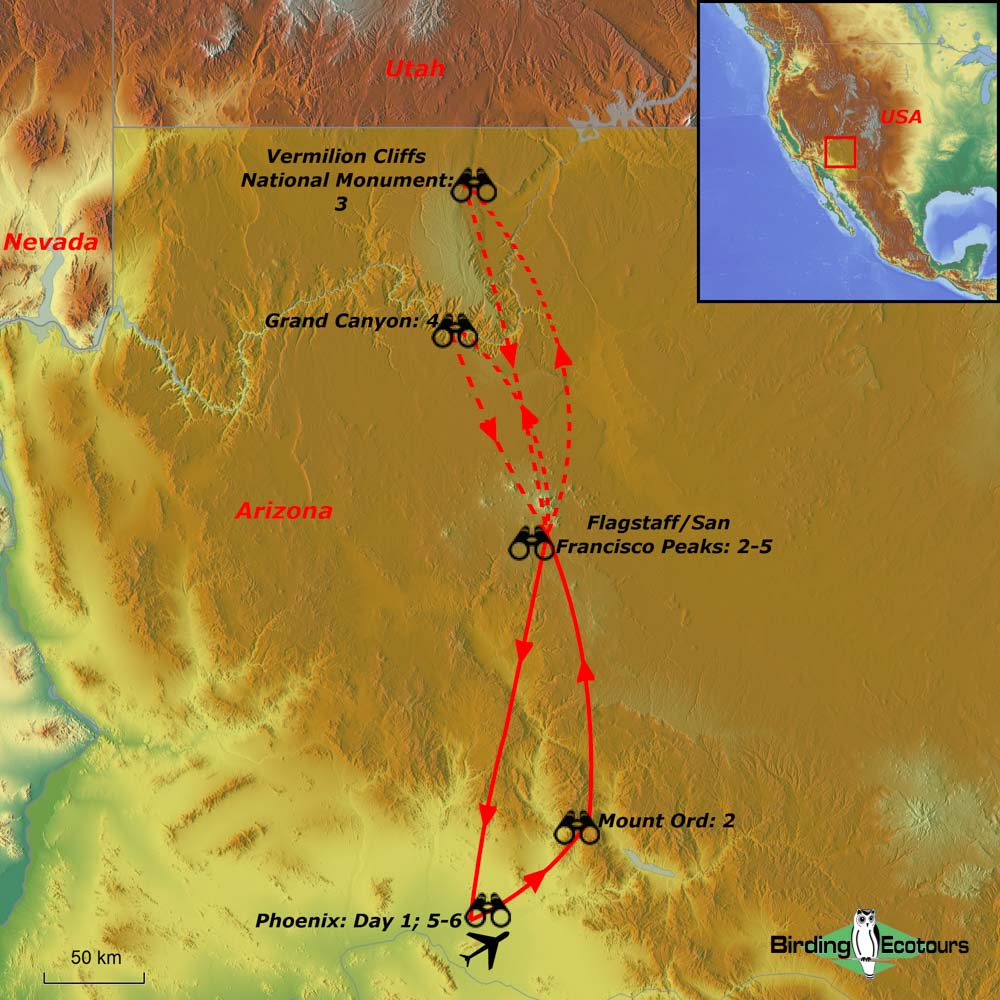Birding Tour USA: Northern Arizona, the Grand Canyon and Condors
Go to: Southeast Arizona Birding Tour | USA Birding Tours | Birding Tours in North America | All our birding tours
Birding Tour USA: Northern Arizona, the Grand Canyon and Condors
August 2025/2026
Immediately following our tour of the desert and scrublands of south-eastern Arizona, we begin our exciting adventure to the northern portion of the state. The area north of the Mogollon Rim, an escarpment that defines the southwestern edge of the Colorado Plateau, presents a completely different impression of Arizona with its extensive ponderosa pine forests, permanently snow-capped peaks, and steep canyons. The most famous of these canyons, the Grand Canyon, is one of the seven wonders of the natural world and is located in the amazing Grand Canyon National Park. The birds in this region are more typical of the Rocky Mountains, such as Lewis’s Woodpecker and Pinyon Jay.
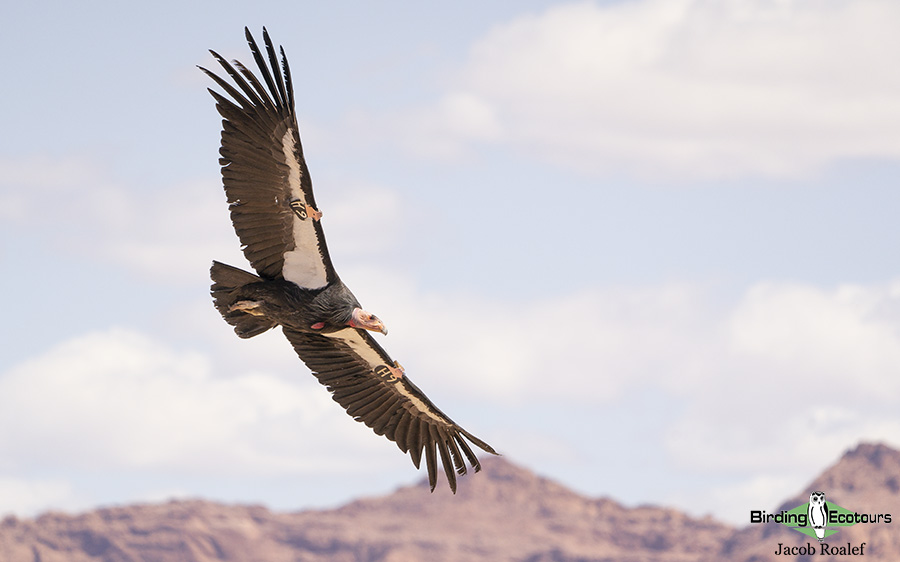 The iconic California Condor will be searched for on this trip.
The iconic California Condor will be searched for on this trip.
The tour begins with a taste of the desert and juniper scrub region just outside of Phoenix for a few speciality birds such as Black-chinned Sparrow. We then head north out of the desert to the city of Flagstaff, which will act as our hub for most of this tour. Towering just north of the city are the majestic San Francisco Peaks, the highest mountains in Arizona at 12,633 feet (3,851 meters). Home to a long list of iconic Western United States species, such as the amazingly hued Mountain Bluebird, the striking Steller’s Jay and the bizarre Clark’s Nutcracker, these mountains make for some fantastic birding. From Flagstaff, we will make trips further north to both the Grand Canyon and Vermilion Cliffs. Besides some of the most jaw-dropping views on the planet, these areas are excellent for birding with the true highlight and target being the Critically Endangered California Condor.
This tour can be combined with our Comprehensive Southeast Arizona — The Desert and Sky Islands tour which precedes our northern Arizona tour.
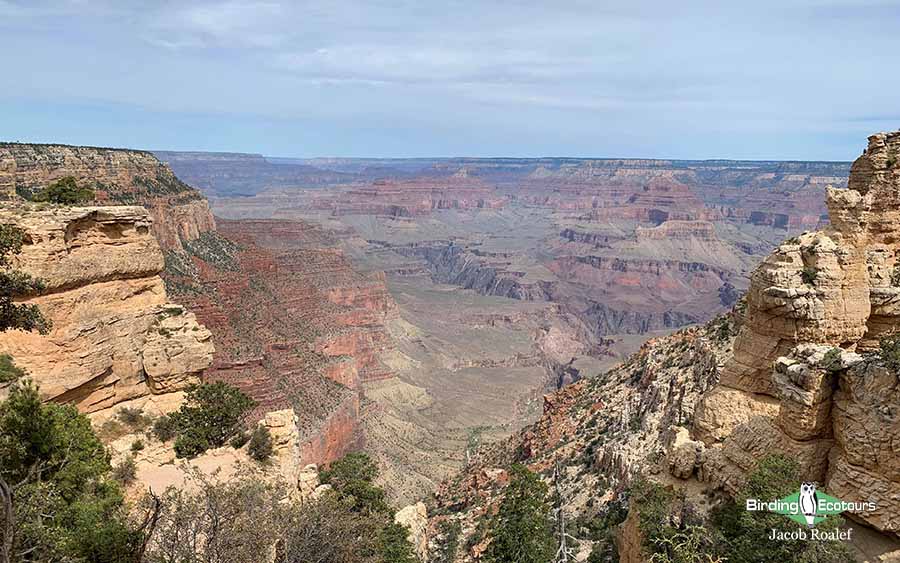
Itinerary (6 days/5 nights)
Day 1. Arrival in Phoenix and searching for lovebirds
For those joining from our exciting southeast Arizona tour, which you certainly do not want to miss, you will be transferred to Phoenix from Tucson by your guide to begin day 1. Other participants will arrive at Phoenix Sky Harbor International Airport and be picked up by the rest of the group to begin the tour. Everyone should plan on transferring to our hotel for a small break and to settle in. From here, we will make a quick stop at one of several local recreation areas to get a little birding in and score our first target, Rosy-faced Lovebird, which is countable in the ABA region. After this, we will head off to dinner for a chance to get better acquainted and discuss the exciting prospects of the trip.
Overnight: Phoenix
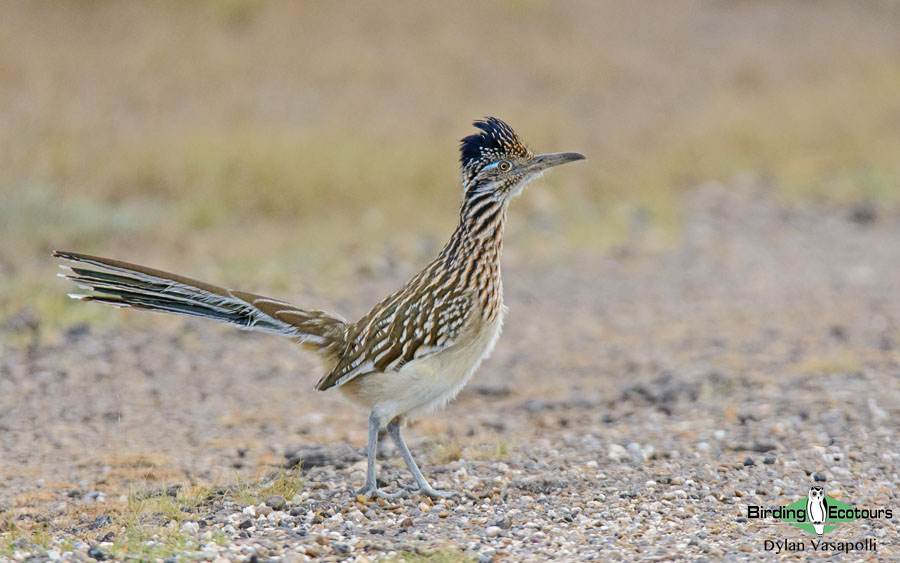
Day 2. Mount Ord to Flagstaff
Located in the Mazatzal Mountains northeast of Phoenix, Mount Ord offers us a great chance at several unique species, such as Grey Vireo and Black-chinned Sparrow. The lower slopes of this mountain, covered in chaparral and juniper scrub, can be alive with the song and bustle of birds early in the morning, and we will hopefully obtain views of some dry country specialties including Scott’s Oriole and Phainopepla. The Old Beeline Highway, our next stop, is a traditional site for two normally rare to uncommon raptors in the United States, Common Black Hawk and Zone-tailed Hawk. They nest in this lovely riparian area along Sycamore Creek, which runs right by the historic highway. While traversing through this beautiful drive, we will keep our eyes peeled to the sides of the road for a potential Greater Roadrunner or even a covey of Gambel’s Quails running by.
As the temperatures begin to climb, we say goodbye to the desert and start our journey towards the mountains in the north. Flagstaff is a lovely city riddled with urban parks, weaved together with a system of forest corridors and an extensive urban trail system, providing us with excellent birding areas to enjoy. The afternoon and evening hours will be spent exploring a few of these areas and hopefully tracking down some fantastic western species, such as the bizarre Lewis’s Woodpecker.
Overnight: Flagstaff
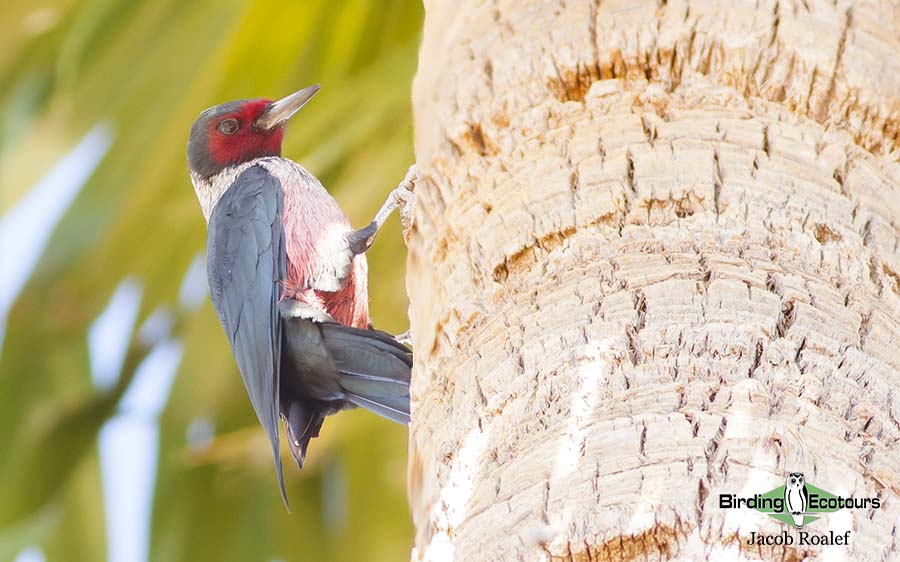
Day 3. Vermilion Cliffs and condor searching
Encompassing a massive area of almost 300,000 acres, the Vermilion Cliffs National Monument lies in the far northern reaches of Arizona. These cliffs have been the most reliable area in recent years for our top target and one of the world’s best birds, California Condor. We will spend the better part of the day, if needed, searching for this amazing bird while enjoying the incredible scenic views on offer. While scanning the cliffs, we hope to encounter a few other raptors like Peregrine Falcon and Zone-tailed Hawk. After a hopefully successful trip, we will head back to Flagstaff for some evening birding.
Overnight: Flagstaff
Day 4. Grand Canyon National Park
The Grand Canyon, carved by the mighty Colorado River, is visually overwhelming for both its immense size and colorful rock walls. We will make a day trip to the South Rim to enjoy this spectacular geological feature while also looking for several Great Basin targets. With any luck, we will score another sighting of California Condor, soaring and roaming the great abyss. On our way to and from the canyon, we will make a few stops in the surrounding Pinyon-juniper woodland habitat for species such as Pinyon Jay, Juniper Titmouse, White-throated Swift and more.
Overnight: Flagstaff
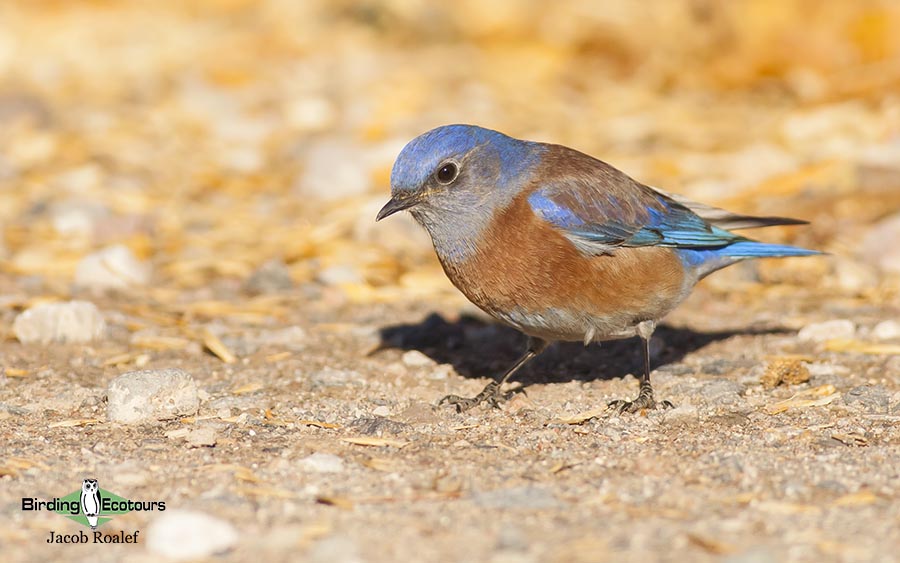
Day 5. San Francisco Peaks
Alpine meadows, groves of aspen and pine, and burnt fields of tree snags, create a habitat mosaic that offers an assortment of birds more typical of the Great Basin than of the Sierra Madre of Mexico (and barely into the USA), which we focus on in our southeast Arizona tour. We spend the day exploring this alpine mosaic habitat via several sites in the San Francisco Peaks for species such as American Dusky Flycatcher, Green-tailed Towhee, and Mountain Bluebird. We will also keep an eye out on the numerous tree snags for woodpeckers like the uncommon American Three-toed Woodpecker and the boldly patterned Williamson’s Sapsucker. In the late afternoon, we will make a visit to the Kachina Wetlands just south of town for Yellow-headed Blackbird and Virginia Rail, before preparing to head back to Phoenix for our final evening.
Overnight: Phoenix
Day 6. Tour concludes
This morning concludes our northern Arizona tour with a drop off at the Phoenix Sky Harbor International Airport. Some participants may have joined from our southeast Arizona tour and transport to the Tucson airport can be arranged if needed. We hope you enjoyed the amazing birds and spectacular views on offer in this region.
Please note that the itinerary cannot be guaranteed as it is only a rough guide and can be changed (usually slightly) due to factors such as availability of accommodation, updated information on the state of accommodation, roads, or birding sites, the discretion of the guides and other factors. In addition, we sometimes have to use a different international guide from the one advertised due to tour scheduling.
Download ItineraryArizona – Southeastern Arizona Custom Trip Report
25 JULY – 1 AUGUST 2019
By Jacob Roalef
DOWNLOAD TRIP REPORT
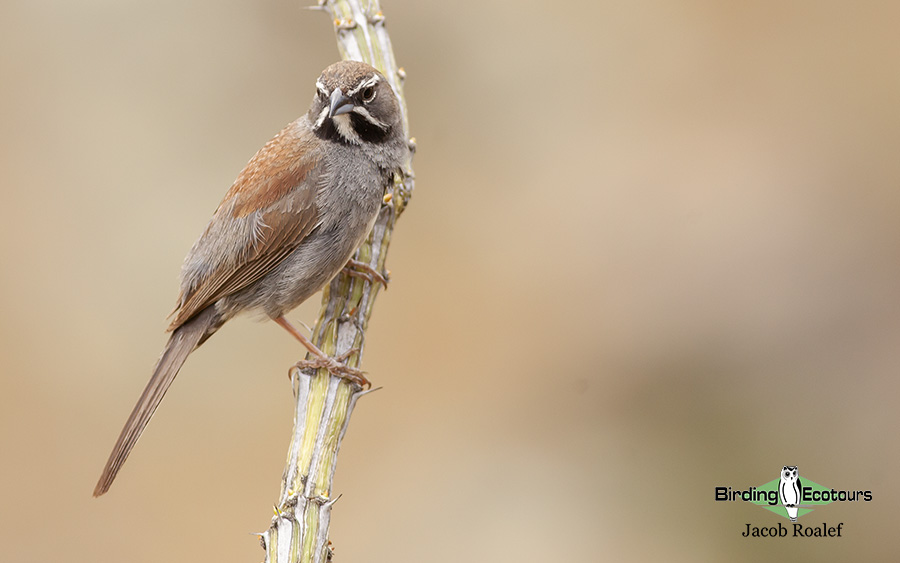
Overview
Southeast Arizona is a land full of beauty with an incredible diversity of avian life, habitats, scenic views, and other wildlife. On this custom-made, 8-day tour we fully experienced this land’s diversity, ranging from the extreme heat of the desert and lowlands to the lush conifers on top of the canyons. The trip began and ended in Phoenix to include a few specialty birds, and from there we traveled through the canyons of southeast Arizona.
A total of 168 bird species were seen (plus eight species heard only). In addition 19 species of mammals where sighted as well as various other wildlife and insects. Full bird and mammal species list can be found at the end of this report. Highlights included Five-striped Sparrow, Rivoli’s Hummingbird, Rosy-faced Lovebird, Arizona Woodpecker, Montezuma Quail (heard), Lucifer Hummingbird, Zone-tailed Hawk, LeConte’s Thrasher, Bendire’s Thrasher, Blue-throated Mountaingem, Olive Warbler, Hermit Warbler, Red-faced Warbler, Common Black Hawk, Black-capped Gnatcatcher, Whiskered Screech Owl, Sulphur-bellied Flycatcher, and Elegant Trogon (heard), as well as White-nosed Coati on the mammal front.
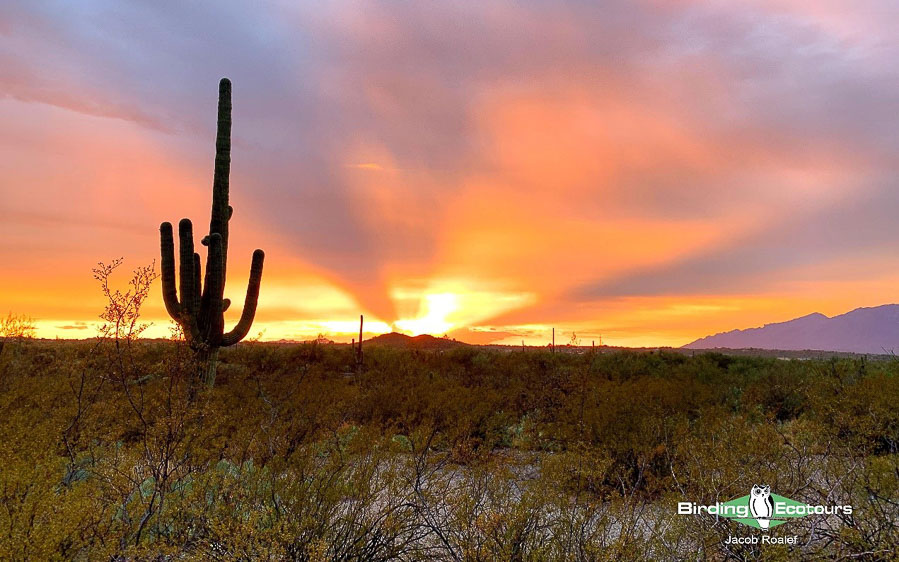
Detailed Report
Day 1, 25 July 2019. Phoenix Area
The tour began around noon when Kieran and Pattie were picked up from the Phoenix airport rental car center. From there we stopped for a quick bite to eat before continuing to Encanto Park, located in the heart of the big city. It didn’t take long before we heard and then saw a small flock of Rosy-faced Lovebirds, an established parrot species here and countable for ABA listing. We scanned the rest of the park quickly and were treated to mostly common city birds, but there was a nice Ring-necked Duck mixed in. We then continued west out of the hustle of the big city to check on a few areas with water. First was the Glendale Recharge Ponds, which hosted a few shorebirds including Baird’s Sandpiper and Western Sandpiper. Pattie also excellently spotted an adult Bald Eagle flying by. Next was the Lower River Road Ponds, where we enjoyed great comparison looks of Neotropic and Double-crested Cormorants perched next to each other. Our final birding stop of the day was the famous Baseline Road thrasher spot. Unfortunately conditions were extremely hot, which made for tough birding, but we eventually got a flash of LeConte’s Thrasher, which we labeled as a BVD (Better View Desired). We continued searching with no avail but did enjoy a fly-over Lesser Nighthawk in the early evening. Then it was off to dinner and the accommodation in Chandler from here.
Day 2, 26 July 2019. Tucson and Mt. Lemmon
We started the day with some morning birding at Sweetwater Wetlands Park. This small park in Tucson was a pleasant area to hike around in the morning before it got too hot. We enjoyed views of a bright-red Vermilion Flycatcher as well as quite a few Abert’s Towhees hopping around. Things really started to heat up around mid-morning, so we headed up Mt. Lemmon for some altitude birding. We hiked around Rose Canyon Lake, where things were considerably cooler, but we were unlucky with our target bird (more to come later). We did, however, enjoy some point-blank looks at Yellow-eyed Junco. We did a little exploring around the campsites until we finally crossed paths with the mixed flock we were hoping for, which contained Grace’s Warbler, Pygmy Nuthatch, Plumbeous Vireo, Cordilleran Flycatcher, Greater Pewee, and others. A Rufous Hummingbird was certainly interested in Pattie’s hat and almost flew right into the car for further investigation! We continued farther up the mountain for a lunch stop and picked up a few more species at feeders, such as Broad-tailed Hummingbird and Pine Siskin.
The afternoon was spent driving to Madera Canyon and our next accommodation stop, Santa Rita Lodge. We managed to arrive with just enough daylight to quickly head out to Box Canyon, where we finally scored Five-striped Sparrow, our top target species, and a nice Scott’s Oriole. A great finish to our second day!
Day 3, 27 July 2019. Birding various sites
We started the day with a relaxing morning by the Santa Rita Lodge feeders, where we enjoyed a few great species like Rivoli’s Hummingbird, Arizona Woodpecker, Hepatic Tanager, Rufous-crowned Sparrow, and Bullock’s Oriole. The rare and elusive White-nosed Coati even made several visits, and with a little luck everyone could enjoy this inquisitive mammal! We then made our way to Florida and Box Canyon, where we were able to find the rare Black-capped Gnatcatcher, an adorable Lucifer Hummingbird nest with two babies, and a jaw-dropping Varied Bunting foraging low to the ground. We then continued south to the De Anza trail in Tubac, which unfortunately had recently experienced some path-altering weather events. There were still loads of new birds for the trip, though, like Tropical Kingbird, Inca Dove and Common Ground Dove, Rufous-winged Sparrow, and Phainopepla. Next up was the Patagonia Rest Stop, which treated us to a family of Thick-billed Kingbirds perched in the tree right over our car. To finish the day we decided to head to the Ash Canyon B&B, which had recently enjoyed hosting a rare hummingbird as well as an occasionally quail. Unfortunately, the hummer never made an appearance, but we did hear a few great birds in the distance like Montezuma Quail, Elegant Trogon, and Grey Hawk.
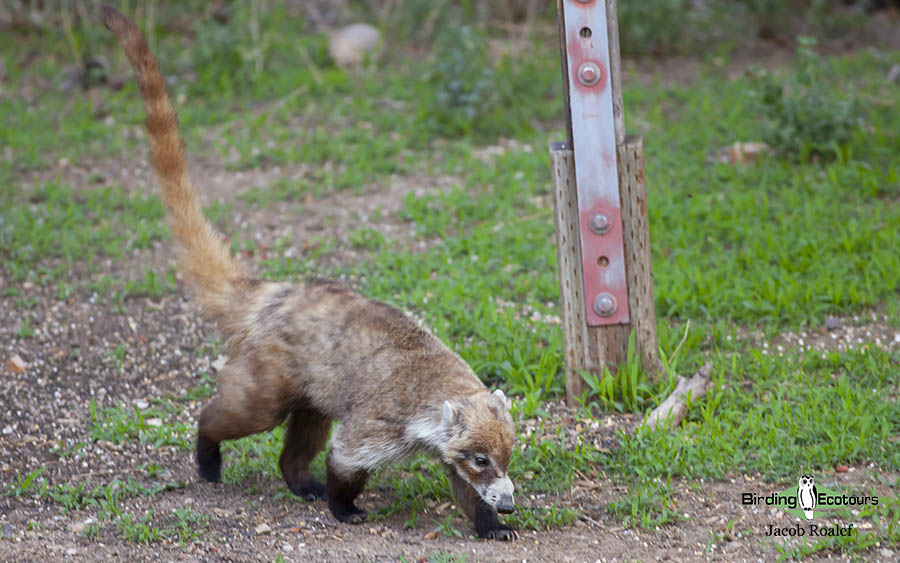
Day 4, 28 July 2019. Carr Canyon and San Pedro House
We started this morning very early, back at the Ash Canyon B&B for one last effort on the Plain-capped Starthroat rarity or a visual of Montezuma Quail. After a few hours waiting, however, enough was enough. We spent the better part of the day at Carr Canyon, one of the many spectacular canyons in the Huachuca Mountains. On the drive up we managed to score a quick look at Woodhouse’s Scrub Jay, a recently split species. The Reef Townsite Campground was particularly slow that morning, but we showed great patience and resilience. Finally we were rewarded with views of Buff-breasted Flycatcher, Spotted Towhee, and Hutton’s Vireo. We did a bit of hiking to a nice overlook area, thanks to the tip of another birder, and were treated to spectacular, top-down views of a Zone-tailed Hawk! Then we continued our way to the top, but things were slow and quiet. All we managed were a few Painted Redstarts.
After lunch we finished the day at the San Pedro House hiking trails, a nice system of trails with a good variety of habitat and a gift shop. The weather was getting rough, but we scored some close views of Botteri’s Sparrow and Yellow-billed Cuckoo. There was also a Western Screech Owl that would occasionally poke its head out while roosting in a cavity in a giant cottonwood tree. After about two hours the weather had wiped us out, and we decided to call it a day. We enjoyed a nice dinner near our hotel in Sierra Vista.
Day 5, 29 July, 2019. Las Cienegas and Ramsey Canyon
The morning was spent in the expansive grassland habitat of Las Cienegas National Conservation Area. Right away we were treated to close views of a singing Cassin’s Sparrow, and in the distance a Swainson’s Hawk was perched in a small tree. The immediate success upon entering this grassland had been a sign, and the hits at Las Cienegas just kept coming with Eastern Meadowlark, Grasshopper Sparrow, Botteri’s Sparrow, over 20 more Cassin’s Sparrows, Cassin’s Kingbird, American Kestrel, and Lark Sparrow. A stop at the small cattle ponds netted us a few Lucy’s Warblers, Black Phoebe, and Brown-crested Flycatcher. Finally we made it to the colony of Black-tailed Prairie Dog, a species extirpated from the state and currently undergoing reintroduction programs. Joining these fun mammals was a whole family of Burrowing Owls.
The afternoon was spent at Ramsey Canyon, where we got onto a nice Sulphur-bellied Flycatcher in the parking lot. We then hiked about half a mile up when Kieran spotted the Whiskered Screech Owl about which a nice gentleman had tipped us off. Back at the bottom a lovely Violet-crowned Hummingbird was sitting on its nest near a feeder station. We decided to head back to the hotel to rest a little and get dinner before heading out for a little nighttime birding. After dinner we returned to Carr Canyon, and at the lower canyon picnic area we managed to hear Common Poorwill calling from the rocky, lowland scrub.
Day 6, 30 July 2019. Portal and the Chiricahua Mountains
We were up and out of the hotel early to begin our journey toward Portal and the majestic Chiricahua Mountains. We started by driving along Stateline Road, where we eventually caught up with Bendire’s Thrasher. We watched it fly from the left side of the car in Arizona across the street to the right side of the car and land in New Mexico. A double-state tick! Along the road we also encountered a few more nice species like Greater Roadrunner, Black-throated Sparrow, and Pyrrhuloxia. Next we visited a few feeder stations in the Portal area. These feeders were bustling with wildlife, including over 50 Gambel’s Quails, Canyon Towhee, Blue-throated Mountaingem, and Harris’s Antelope Squirrel, and we even heard Crissal Thrasher.
From here we began our journey up the mountain, where we enjoyed lunch at a campground with a few Yellow-eyed Juncos. After lunch we birded along the road between Onion Saddle and Barefoot junction, which is loaded with conifers. Right away a few Red Crossbills were getting a drink from a small puddle in the road. After a few hours of searching, we came across a few mixed flocks that were absolutely loaded with different species, including Hairy Woodpecker, Olive Warbler, Brown Creeper, Bridled Titmouse, Grace’s Warbler, Black-throated Grey Warbler, Painted Redstart, Pygmy Nuthatch, House Wren, and Bushtit. Our last stop of the day was the feeder station at the George Walker House in Paradise. Unfortunately our time here was cut short due to an incoming thunderstorm. We decided to head back down the canyon before any potential flooding occurred.
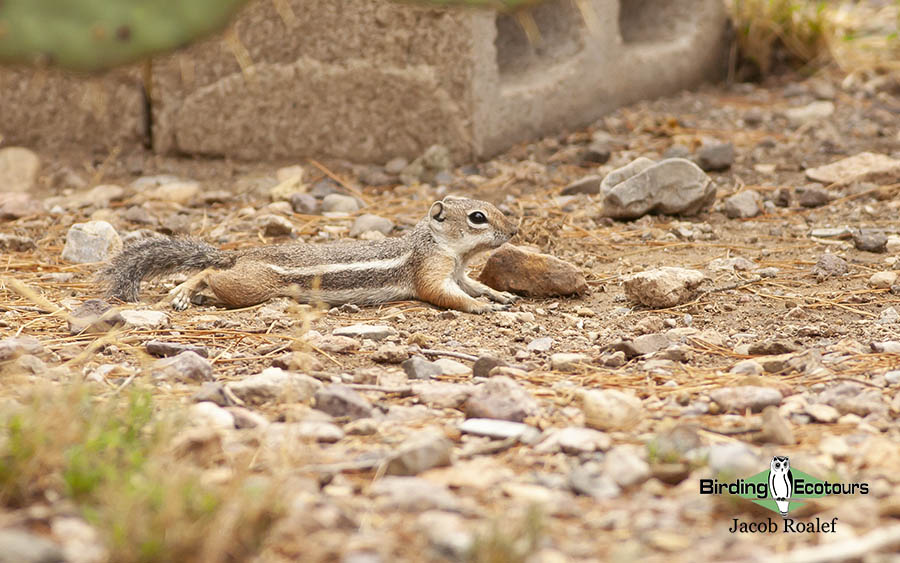
Day 7, 31 July 2019. Phoenix – Willcox and Mt. Lemmon
We spent the early hours of the morning at Lake Cochise just outside of Willcox. An oasis of water in an otherwise dry desert, this lake was teeming with waterbirds. Hundreds of shorebirds like American Avocet, Black-necked Stilt, and Wilson’s Phalarope were covering the water’s edge. Larger waders and ducks such as Great Blue Heron, White-faced Ibis, and Cinnamon Teal were foraging in the slightly deeper sections, while Barn and Tree Swallows were zooming around catching insects. We continued on our journey back to Phoenix and made a quick stop in a small town called Saint David. A pair of Mississippi Kites were nesting in the neighborhood, and it didn’t take long before we were treated to great looks of this amazing raptor.
We decided to give Mt. Lemmon one more try, and this time it sure didn’t disappoint! Back at Rose Canyon Lake we waited for only about 15 minutes before a raptor started calling. The Common Black Hawk was soaring around and then perched up in a tree for us for over 10 minutes while we watched in the scope. A true highlight bird of the trip! We then continued up the mountain, where we encountered an amazing mixed flock with multiple Red-faced Warblers, Hermit Warbler, Townsend’s Warbler, and Mountain Chickadee. We couldn’t help but celebrate a little during a late lunch before making the few hours’ drive back to Phoenix for the final night of the trip.
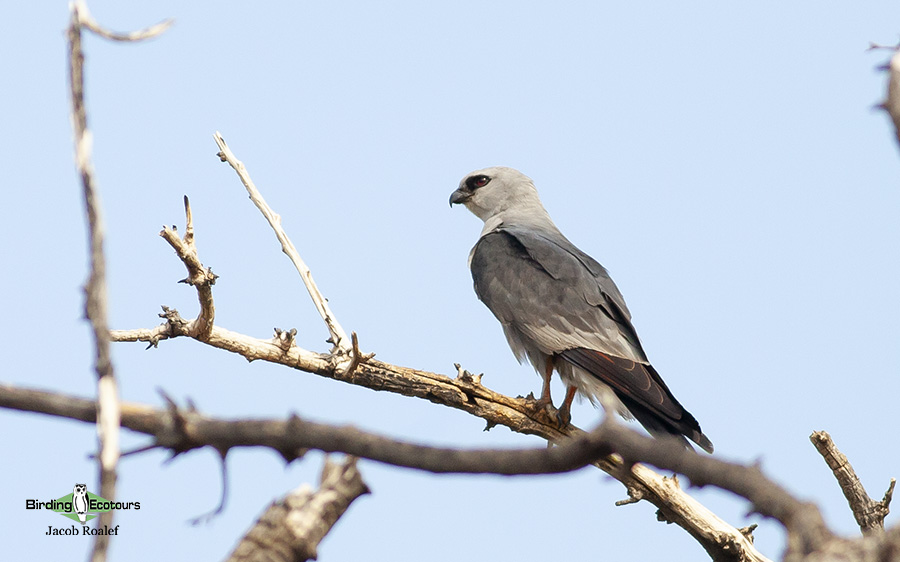
Day 8, 1 August, 2019. Thrasher and Departure
On the final morning of the trip we decided to head back to Baseline Road in hopes of better views of LeConte’s Thrasher. This morning proved to be much more active, and we quickly found LeConte’s Thrasher as well as multiple Bendire’s Thrashers, Ash-throated Flycatcher, and a pair of Black-tailed Gnatcatchers. A great morning to finish a great tour! We then transferred to the airport and said our goodbyes and until next time.
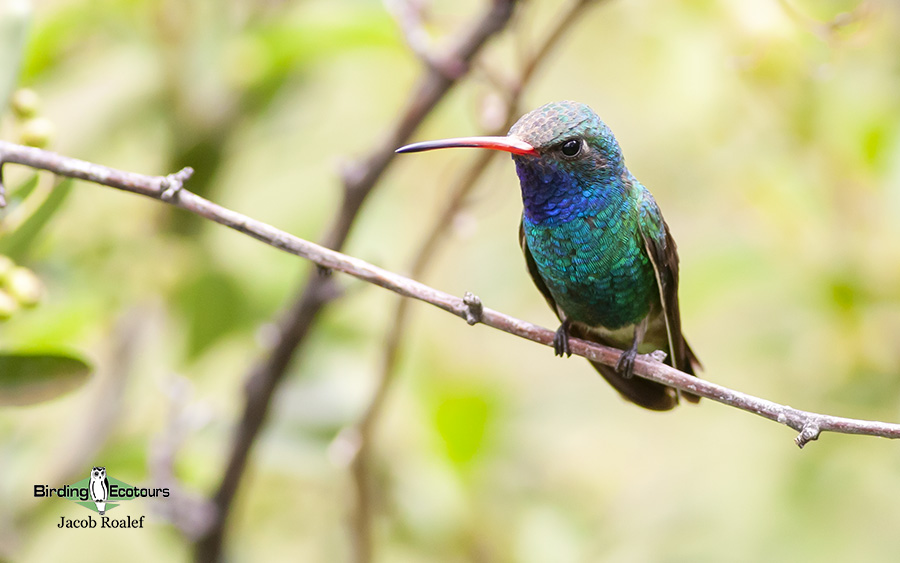
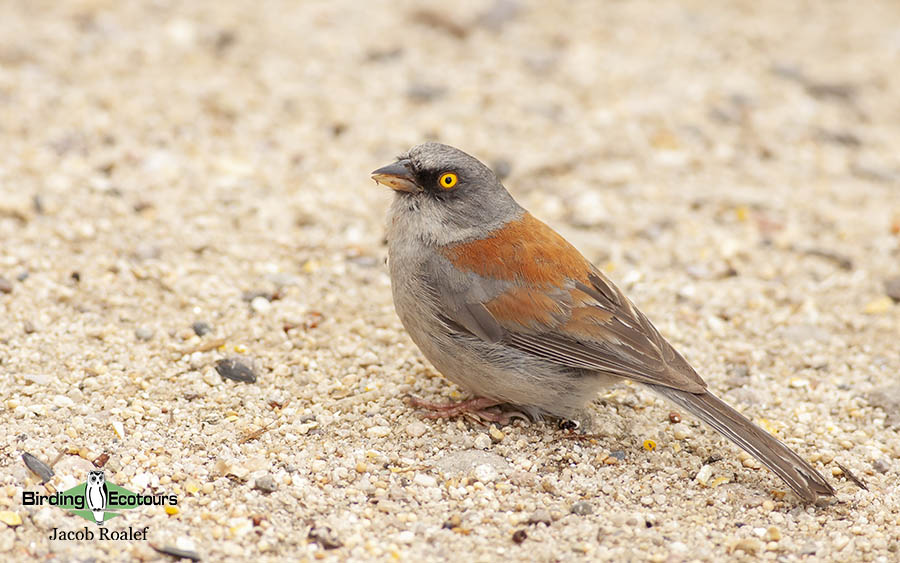
DOWNLOAD TRIP REPORT
Please see the downloadable PDF above with the full species lists included. This is a sample trip report. Please email us ([email protected]) for more trip reports from this destination.

